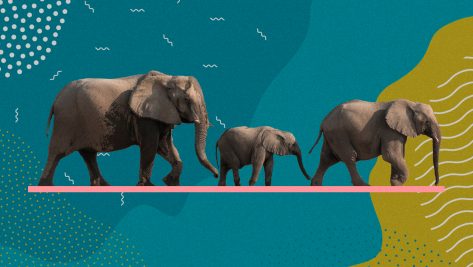I’d like to start at the beginning.
What is a woman?
Let’s take a look at a definition from a Spanish etymological dictionary published in 1881, compiled by Roque Barcia, and from there, analyze what a woman was and what she is today, so as to glimpse what she will be tomorrow.
Woman: Rational creature of the female sex // the wife in relation to the husband. After a series of moralistic comments about how a woman should behave, Barcia ends with the expression: To be a woman, which means: when a girl has reached the state of menstruation.
In this definition we see the different, interrelated spheres that arise when we talk about women.
The biological definition is people born with XX chromosomes as opposed to the male sex, who are born with XY chromosomes. But this definition excludes people born with more complex biology, such as intersexuals, or those who despite not having been born with two XX chromosomes feel female in the depths of their being.
Another definition could be based on a woman’s capacity to be a mother. However, as Judith Butler would point out, many women decide not to be mothers, and even those who do have a reproductive capacity of around 20 years, while they may live into their nineties. In which case, is it justifiable to classify their participation in society based on 20 years of their life? What’s more, many women feel they are mothers, even if they have not given birth, which would also fall outside the above definition.
At the same time, we can also define any female who identifies with the feminine as a woman. Thinkers of the “feminism of difference” movement, such as Lucy Irigaray, argue that the feminine must be vindicated in a world constructed upon the masculine, and therefore characteristics traditionally associated with women such as intuition or sensitivity must be extolled in a world where masculine qualities such as drive and competitiveness are overvalued. But this definition also leaves out many people, since there are both many women who do not identify with these qualities and many men who do.
This leaves us with that part of the definition which I believe all feminist movements would agree with, (upon rejecting it) which describes a normative behavior for women, what they should or should not do, and where they can or cannot contribute.
While we can question ontologically whether there is such a thing as a woman, the data nevertheless confirms a significant asymmetry in terms of the political and economic representation of those whom statistics today define as women.
However, the positive aspect here is that this asymmetry is being reduced, since the data points clearly to a steady improvement in attaining equality on the part of society and specifically on the part of companies. For example, we can analyze the results of the latest report of the Spanish Innodiversity Index, which more than 700 Spanish companies have so far taken part in.
According to the report, more than 85% of the companies surveyed say they show an interest in the inclusion of women in their companies, and in large companies this figure rose to 89.8%, and 100% in listed companies. This interest is reflected in all sectors, ranging from 100% in financial services to 67% in construction and infrastructure.
At the same time, a growing number of Spanish companies are developing indicators to measure the impact of their inclusion policies: 74% of large businesses and 85% of those listed on the stock exchange say they have Key Performance Indicators to measure the impact of gender policies.
Among the tools companies are using to promote inclusion are policies for equality in the recruitment and promotion of candidates, as well as reflecting their commitment to equality in their mission statement and objectives, and also providing paternity leave, which 90% of the large companies in the sample now do. These policies have been maintained and even increased during the pandemic, say 81% of the companies in the sample.
Society has undoubtedly moved forward, thanks in large part to our mothers and grandmothers, who fought for better representation. At the same time, I would also like to mention our daughters and granddaughters, because society is always moving forward. It is possible that the coming generations will find broader categories in which the different ways of being and feeling a woman are accepted, once complete equality is achieved and being a woman does not mean facing greater difficulties when it comes to contributing to society based on individual independence.
© IE Insights.











